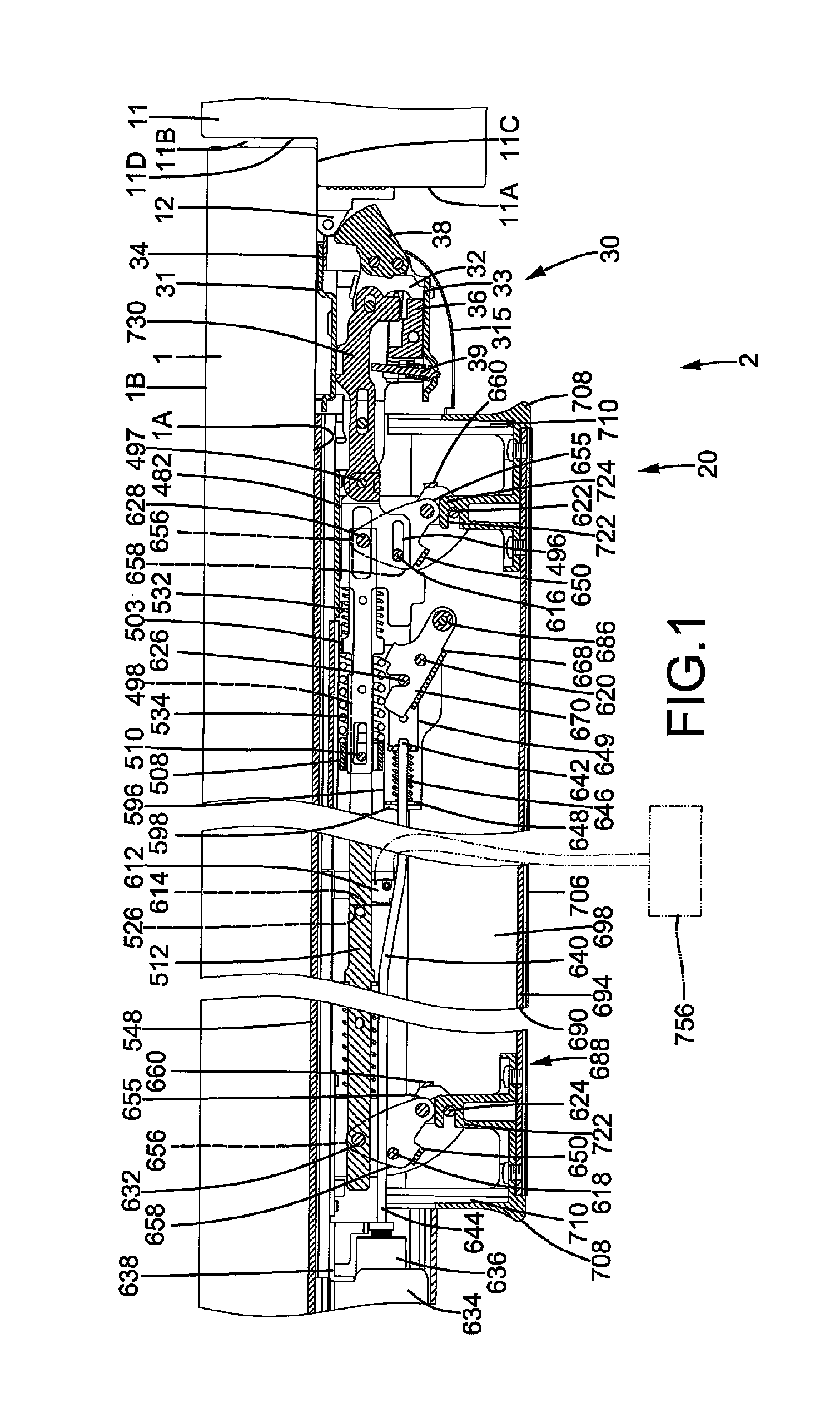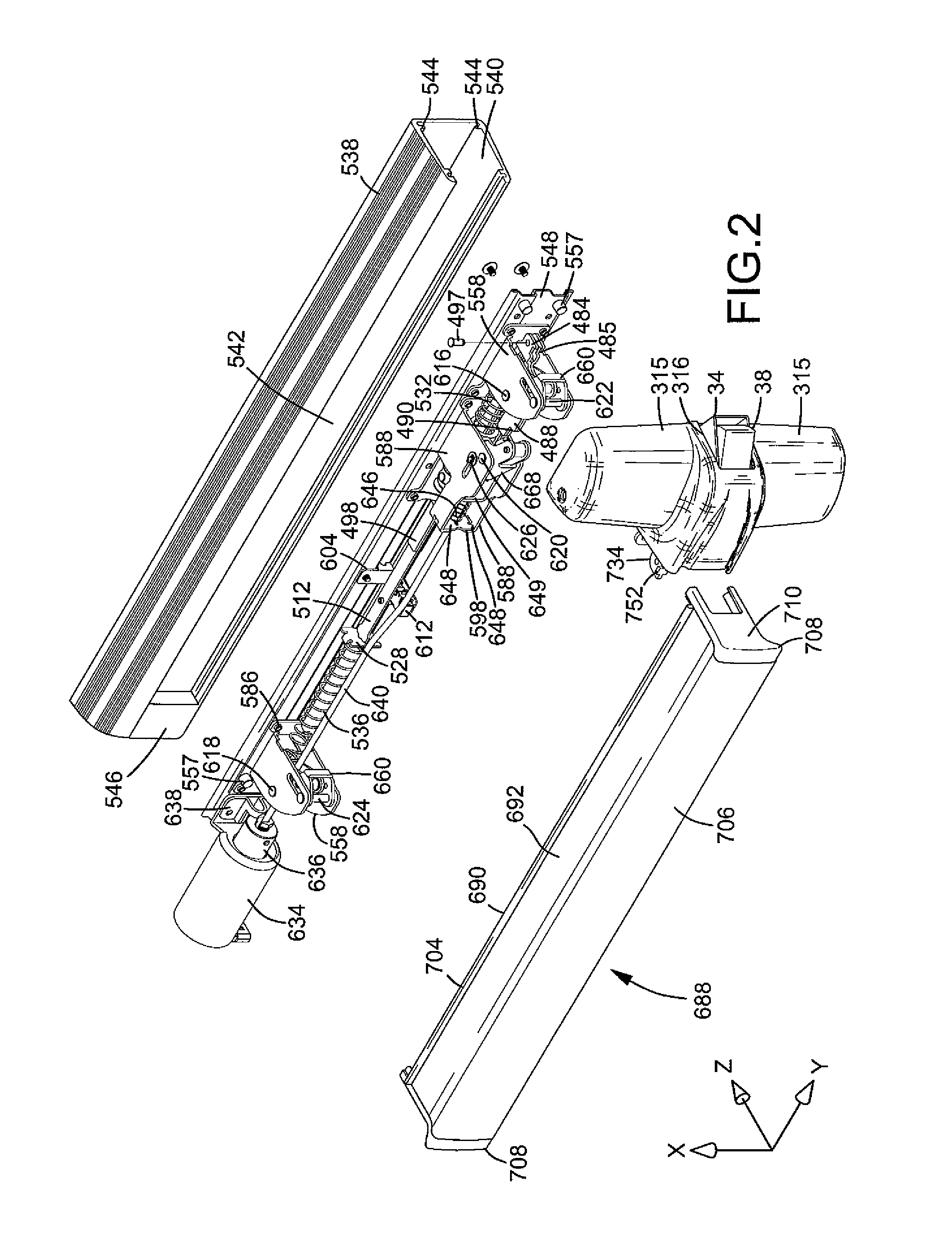Door lock with idle travel in a locking state
a technology of locking state and lock, applied in the field of door locks, can solve the problems of damage to the components of the lock, the lock cannot be retracted to prevent unauthorized access,
- Summary
- Abstract
- Description
- Claims
- Application Information
AI Technical Summary
Benefits of technology
Problems solved by technology
Method used
Image
Examples
Embodiment Construction
[0040]A door lock according to the present invention is shown in the drawings and generally designated 2. Door lock 2 includes an operational device 20 and a latch device 30 mounted to a door 1 pivotable relative to a door frame 11 having rectangular or inverted U-shaped cross sections. Door frame 11 is fixed to a wall of a passageway and includes an inner face 11A and a stepped portion 11B. Stepped portion 11B includes an abutment face 11C extending perpendicularly from an edge of inner face 11A and a face 11D extending perpendicularly to abutment face 11C and parallel to and spaced from inner face 11A. Door 1 includes first and second sides 1A and 1B. An end of door 1 is pivotably mounted to door frame 11, and door 1 is movable between an open position and a closed position. When door 1 is in the closed position, first side 1A of door 1 abuts abutment face 11C of door frame 11. An end face of the other end of door 1 adjacent to stepped portion 11B is spaced from abutment face 11C....
PUM
 Login to View More
Login to View More Abstract
Description
Claims
Application Information
 Login to View More
Login to View More - R&D
- Intellectual Property
- Life Sciences
- Materials
- Tech Scout
- Unparalleled Data Quality
- Higher Quality Content
- 60% Fewer Hallucinations
Browse by: Latest US Patents, China's latest patents, Technical Efficacy Thesaurus, Application Domain, Technology Topic, Popular Technical Reports.
© 2025 PatSnap. All rights reserved.Legal|Privacy policy|Modern Slavery Act Transparency Statement|Sitemap|About US| Contact US: help@patsnap.com



